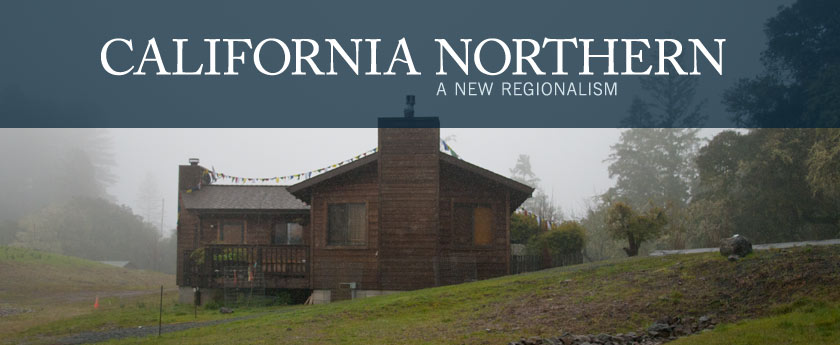Work as Meditation
By Sarah Dozor
It is early morning on the northern Sonoma County coast. The fog hangs in veils through the trees and crawls down to sit in the valleys. At this particular spot in the hills over the San Andreas fault line, prayer flags stream over a gold stupa, and from a warehouse floats the sound of many voices chanting. They are traditional Tibetan Buddhist prayers, but this is not the traditional place for them. Twenty or so people, all Americans and Europeans, most in their twenties, form a circle in a bindery with Buddhist figures painted on the walls and incense burning on altars, and pray in Tibetan for all sentient beings to find freedom from suffering. This is the beginning of the day at Ratna Ling, the home of the Yeshe De Tibetan text preservation project.
Everyone working here is a volunteer. The group lives and works together in this small community settled among the redwoods just inland from the coast and about fifteen miles north of the Russian River. Ratna Ling is a retreat center for outside visitors, but most of the staff and guests work in the Yeshe De press and bindery producing sacred Tibetan Buddhist texts.
I’ve been a volunteer here since 2010. I had just moved back to Northern California from New York, where I attended college then worked for literary magazines and a publisher. While I had no particular interest in Buddhism apart from a vague, positive familiarity I associated with my father’s practice of it growing up, after New York I wanted to be close to nature. From my occasional visits to Ratna Ling, I imagined a peaceful sort of life in this small spiritual community. While I had sworn not to work in publishing again, with its crisp Manhattan offices full of blazers and working lunches, coming to Yeshe De meant an introduction to the other side of the book industry—the physical production side, which strongly appealed to me. I looked forward to thinking not about the content of the books, but to their creation, and to learning about pallet jacks and jogging blocks, paper textures and good folds.
The history of Yeshe De is also a history of Tibet, whose political status has been unsteady and whose entire culture has been restricted since 1950, when the Chinese invaded. The invasion meant a mass destruction of Tibetan culture and a violent suppression of Buddhism—texts and temples ruined, the practice of Buddhism banned, and Tibet’s culture severely damaged, still yet to recover. In 1959, violence escalated and Tibetans began to flee their country. Eighty-seven thousand Tibetans died in the violence and thousands more became refugees, many in India and, over time, other parts of the world, including the Bay Area.
This is an excerpt of “Work as Meditation”

